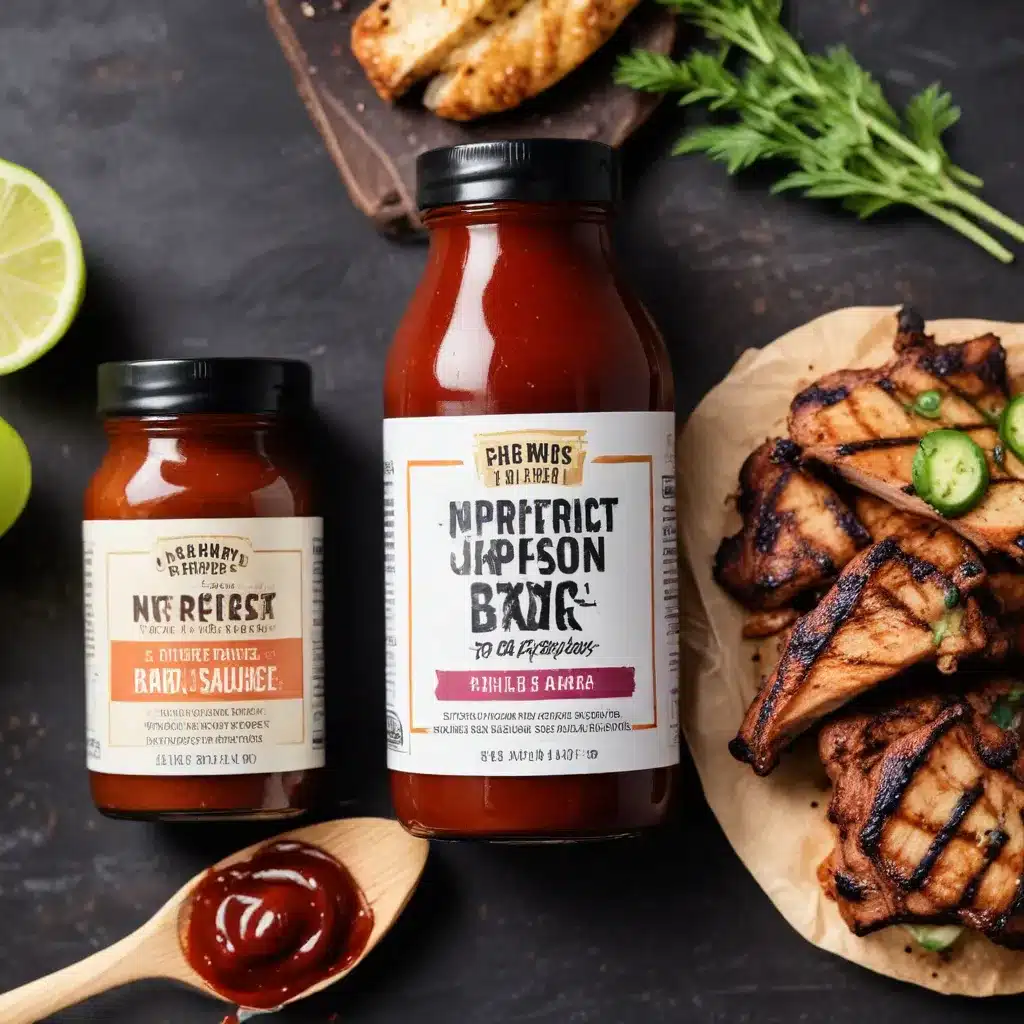
Mastering the Art of Barbecue Sauce Pairing
As an experienced barbecue pitmaster, I’ve had the pleasure of exploring the boundless possibilities that arise when you pair the smoky, savory flavors of grilled meats with the perfect barbecue sauce. It’s a culinary dance that, when executed with finesse, can elevate your backyard cookouts and impress even the most discerning of palates.
Over the years, I’ve discovered that the key to crafting a truly memorable barbecue experience lies in understanding the nuances of flavor profiles and how they interact. It’s not just about slathering on a generic sauce – it’s about finding that harmonious balance that makes each bite a symphony of taste.
Let me share with you some of my personal insights and techniques for pairing barbecue sauces in unexpected ways. Whether you’re a seasoned pit boss or a backyard grilling enthusiast, these tips will expand your flavor horizons and transform the way you approach your next barbecue feast.
Unlocking the Flavor Potential of Barbecue Sauces
When it comes to barbecue sauces, the options are as vast as the regions that have perfected their own unique styles. From the sweet and molasses-rich sauces of Kansas City to the tangy, vinegar-based concoctions of the Carolinas, each sauce brings its own distinct personality to the table.
The key to unlocking the full flavor potential of these sauces lies in understanding their dominant notes and how they can complement or contrast with the meat and seasonings you’re working with. For instance, I’ve found that the smoky, robust flavors of a porter or stout pair exceptionally well with classic barbecue meats like brisket or ribs, as the malty sweetness of the beer accentuates the depth of the dish.
On the other hand, when I’m serving up spicier fare, such as a barbecue with a fiery dry rub or zesty sauce, I tend to gravitate towards hoppy IPAs. The bitterness of the hops helps to cut through the heat, cleansing the palate and allowing each mouthful to be as impactful as the first without overwhelming the senses.
Discovering Unexpected Pairings
But the true magic happens when you venture beyond the traditional pairings and explore unexpected flavor combinations. One of my personal favorites is matching a fruity wheat beer with lighter barbecue fare, such as grilled chicken or fish. The subtle citrus notes in the beer provide a refreshing contrast to the natural flavors of the meat, creating a unique and satisfying dining experience.
Another revelation for me was the discovery of how well slow-smoked brisket pairs with a balanced amber ale. The malt and hop profile of the amber ale harmonizes beautifully with the rich, bold flavors of the brisket, resulting in a pairing that is truly greater than the sum of its parts.
Embracing Regional Inspirations
As a barbecue enthusiast, I’ve also learned to appreciate the power of regional pairings. Serving a craft beer from a local brewery alongside regional barbecue specialties can evoke a sense of place and tradition, creating a deeper connection to the meal and the community that has nurtured these flavors.
For example, pairing a Texas-style brisket with a bold, hoppy beer from a Lone Star State brewery can be a match made in culinary heaven. The flavors have evolved together, complementing each other in a way that transcends the individual components.
Mastering the Sauce-Pairing Equation
When it comes to mastering the art of barbecue sauce pairing, I’ve developed a few key principles that I always keep in mind:
-
Consider the Flavors of the Meat and Seasonings: The foundation of your dish is the meat itself, and the seasonings you use. Understanding how these flavors interact with the barbecue sauce is crucial for achieving a balanced palate experience.
-
Match Intensity Levels: Just as you wouldn’t pair a delicate white fish with a heavy, full-bodied red wine, it’s important to match the intensity of the barbecue sauce with the intensity of the dish. A robust, smoky brisket might call for a bold, malty porter, while a lighter grilled chicken dish might be better suited for a crisp, refreshing lager.
-
Explore Contrasting Flavors: Don’t be afraid to experiment with sauces that provide a contrasting flavor profile to the dish. For example, a tangy, vinegar-based sauce can beautifully complement the richness of a slow-smoked pork shoulder, creating a harmonious balance of flavors.
-
Embrace Regional Pairings: Leveraging the synergy between local barbecue specialties and regional craft beers can elevate your dining experience and connect you to the culinary traditions of a particular area.
-
Consider the Sauce Itself: The type of barbecue sauce you choose can also dictate the optimal beer pairing. A sweet, molasses-based sauce might pair well with a dark lager or a brown ale, while a spicy, Cajun-inspired sauce could find its match in a hoppy IPA.
Elevating Your Barbecue Experience
As an enthusiast of both great barbecue and refreshing beers, I’ve found that discovering the perfect pairing can truly elevate the entire dining experience. The harmonious interplay of flavors, textures, and aromas creates a symphony for the senses that leaves a lasting impression on your palate.
Whether you’re hosting a backyard bash or catering a competition-level feast, I encourage you to explore the boundless possibilities of barbecue sauce and beer pairings. Experiment with different combinations, trust your instincts, and don’t be afraid to challenge traditional pairings. After all, the best pairing is the one that resonates most with your personal taste preferences.
So, fire up the grill, chill your favorite brews, and let the magic of barbecue and beer pairing unfold. I can’t wait to hear about the flavor discoveries you make on your culinary journey. Cheers to your next backyard adventure, and may your plate and glass be forever filled with the perfect pairing.

